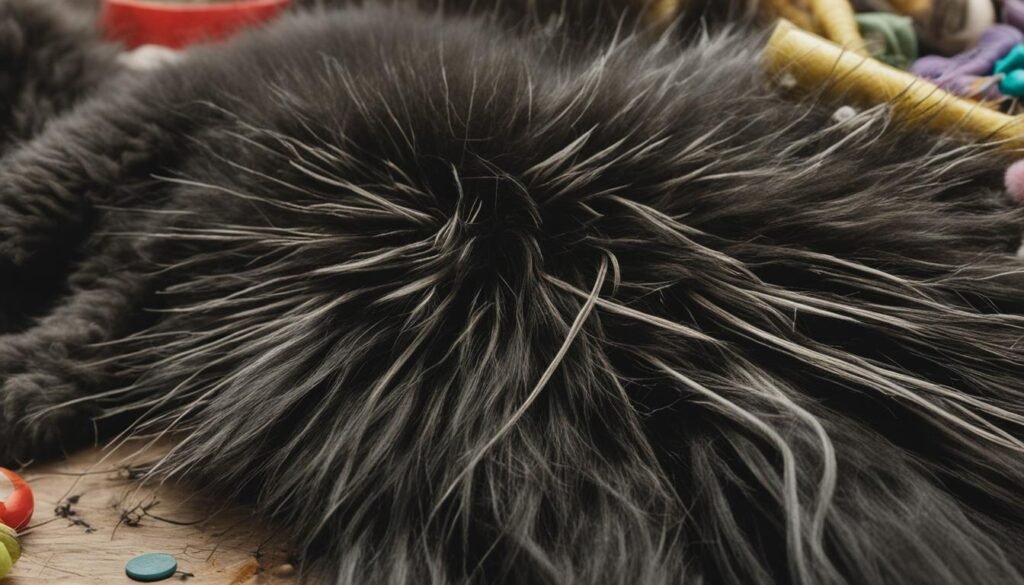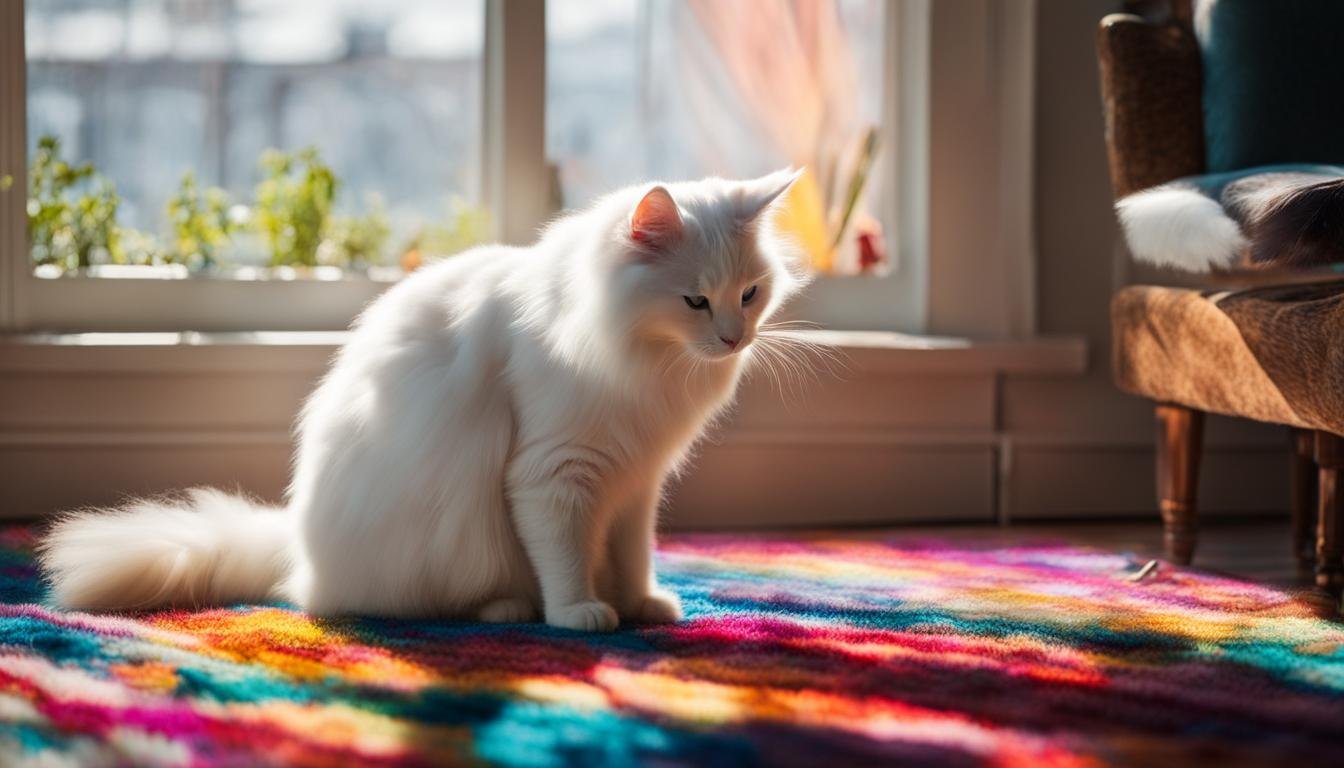Matted cat hair is a common issue faced by many cat owners. It can be a cause for concern as it may indicate underlying health problems. Understanding the causes of cat hair matting and how to address it effectively is essential for the well-being of your feline friend.
Cat hair matting can occur when cats stop grooming or are unable to groom themselves effectively. There are several factors that contribute to this, including skin issues like allergies or external parasites, obesity, kidney disease, diabetes, dental issues, arthritis, and old age.
If you notice your cat’s fur is matted, it is recommended to seek veterinary attention to determine the underlying cause and prevent further complications. Your veterinarian will be able to provide the necessary treatment and advice tailored to your cat’s specific needs.
What is Matted Cat Hair and its Signs
Matted cat hair refers to extremely tangled and knotted fur that is difficult to comb through. It occurs when loose hair becomes intertwined and forms clumps or mats. Signs of matted cat hair include:
- Fur that is no longer soft
- Fur sticking up in tufts
- Clumps of fur that do not go away
- Discomfort expressed by the cat when trying to comb the hair
Matted fur can occur all over the body or in isolated areas like the stomach or lower back. It can be painful for cats and may pull on the skin as they move. Recognizing the signs of matted cat hair is important for prompt intervention.
To give you a visual understanding of matted cat hair, take a look at the following image:
Causes of Matted Cat Fur
There are various causes of matted cat fur. One common cause is a decrease in grooming behavior or ineffective grooming due to skin issues like allergies or external parasites.
Obesity can also lead to matted fur as overweight cats may have limited mobility and struggle to reach certain parts of their body for grooming.
Other conditions that may contribute to matted cat fur include long or coarse hair, kidney disease, diabetes mellitus, dental issues, arthritis, and old age. Understanding the underlying causes can help prevent and address matted cat fur effectively.

How to Remove Matted Cat Fur
Removing matted cat fur can be a challenging task that requires patience and proper technique. This is especially true if the mats are severe and causing discomfort to your beloved feline friend. To help you with this issue, here are some tips on how to remove matted cat fur effectively:
- Use a flea comb: In mild cases of matted fur, you can try using a flea comb to slowly work through the mat. Start at the outer edges and gently separate the fur with the comb, working your way towards the center of the mat. Be careful not to pull or tug on the hair, as this may cause your cat discomfort.
- Seek professional cat grooming: If the mats are severe or difficult to remove, it is best to seek help from a professional cat groomer. These trained individuals have the expertise and proper tools to safely remove mats without causing harm to your cat. Professional grooming sessions can also be a great opportunity to pamper your furry friend and ensure their coat stays healthy and tangle-free.
- Consult with your veterinarian: If the mats seem to be causing your cat pain or if you’re unsure about removing them yourself, it is always a good idea to consult with your veterinarian. They can examine your cat, determine the severity of the mats, and provide guidance on the best course of action. Your vet may also recommend additional treatments or remedies to prevent future matting.
Remember, it is important not to use scissors or other sharp objects to cut out the hair mat. This can easily lead to accidental injuries to your cat’s skin. By following these tips and seeking professional help when needed, you can safely and successfully remove matted cat fur.
Preventing Cat Hair Matting
Preventing cat hair matting is essential for maintaining your furry friend’s overall health and well-being. By incorporating simple grooming tips and prioritizing cat hair care, you can minimize the occurrence of tangled and matted fur.
Regular brushing plays a crucial role in preventing cat hair matting, especially if your cat has long hair. Brushing removes loose hair, prevents tangles, and promotes healthy blood circulation to the skin. Use a brush or comb that is suitable for your cat’s fur type and be gentle to avoid causing any discomfort.
Additionally, scheduling regular veterinary check-ups is vital to detect and address any underlying health conditions that may affect your cat’s grooming behavior. Your veterinarian can provide guidance on the appropriate grooming routine based on your cat’s specific needs, ensuring their fur stays healthy and mat-free.
Furthermore, maintaining a flea prevention regimen and ensuring a balanced diet with essential nutrients contribute to the overall health of your cat’s coat. A monthly flea prevention treatment protects your cat from external parasites that can cause itchiness and subsequent matting. Feeding a high-quality diet with proper nutrition strengthens the hair follicles, resulting in healthier and more manageable fur.
